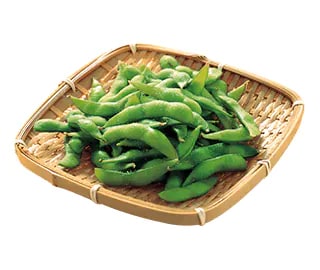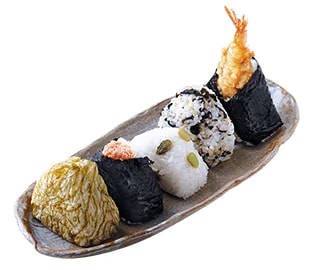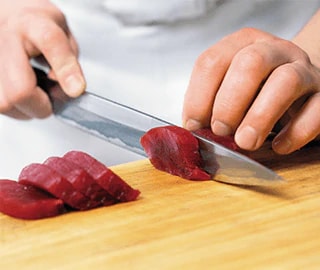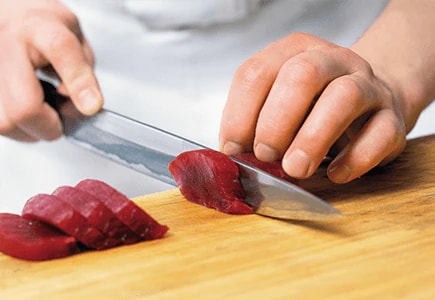
In Japanese cuisine, the menu is designed in harmony with the season and occasion, and food aesthetics are essential. Authentic Japanese food revolves around the detailed knife-work of the chef, and Japan’s extensive range of wabocho, traditional Japanese kitchen knives, allows them to perform with intricate precision. While much of the world uses double-beveled knife blades, many Japanese knives are single-beveled, which means the blade is sharpened on the outer side and the inner side is flat; furthermore, each wabocho knife has a specific blade length and style intended for certain foods and cutting methods. A single bevel blade has a sharper edge compared to a double bevel. When cutting with a single bevel, you pull the knife toward you, rather than pushing down as you would with a double-beveled blade. This pulling-cutting motion cuts ingredients more precisely and prevents the rupture of food cells. There are particular wabocho designed to prepare specific foods, including sashimi, vegetables, and soba and udon noodles. Considering the enormous variety of fish used in Japanese cuisine, a wide range of knives exists for their detailed preparation. For professional chefs, these are broken down into highly specialized blades; for example, specific knives are used for fugu blowfish, for cutting the small bones of hamo pike conger, and for filleting unagi eel. Wabocho are essential tools for professional chefs, and they sharpen and hone the blades daily with a whetstone.
Japanese cuisine revolves around precision knife-work
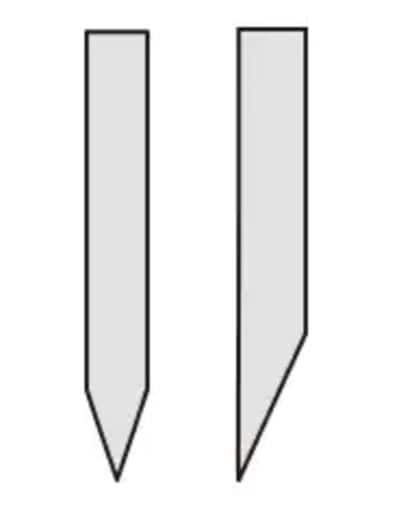
double-beveled (left) and
single-beveled blades
It is believed that today’s straight-blade form emerged during the early to mid-nineteenth century, when the basic style of Japanese food culture as we know it today was established. Japanese knives evolved alongside the advancements of the country’s food culture. During the post-war period, with the introduction of Western foods, popular household kitchen knives called santoku-bocho came into general use. The word santoku means “three virtues,” suggesting that this double-beveled knife may be used to cut three different foods—fish, meat and vegetables. Nevertheless, professional chefs continue to rely on the exceptional cutting control of their specialized single-beveled knives.

